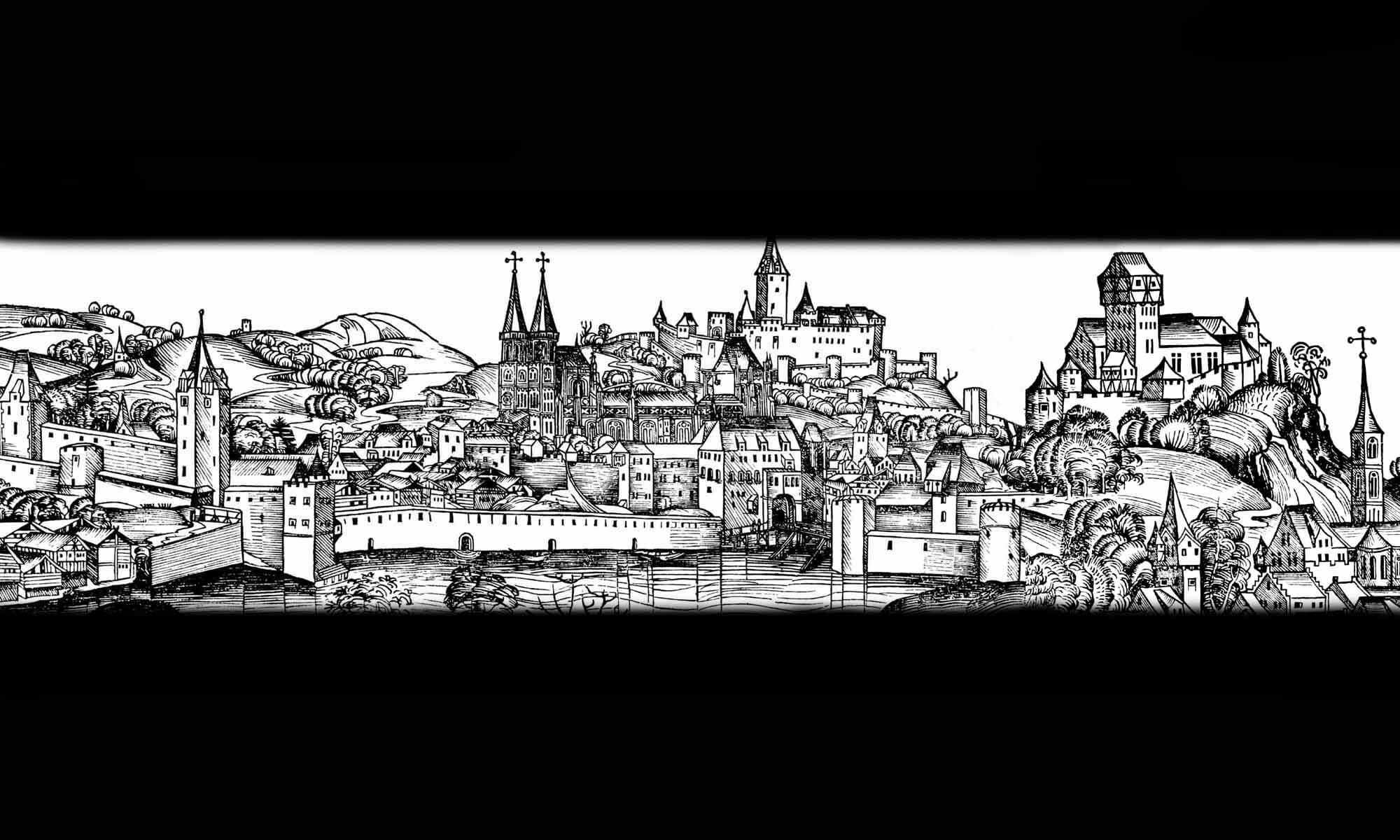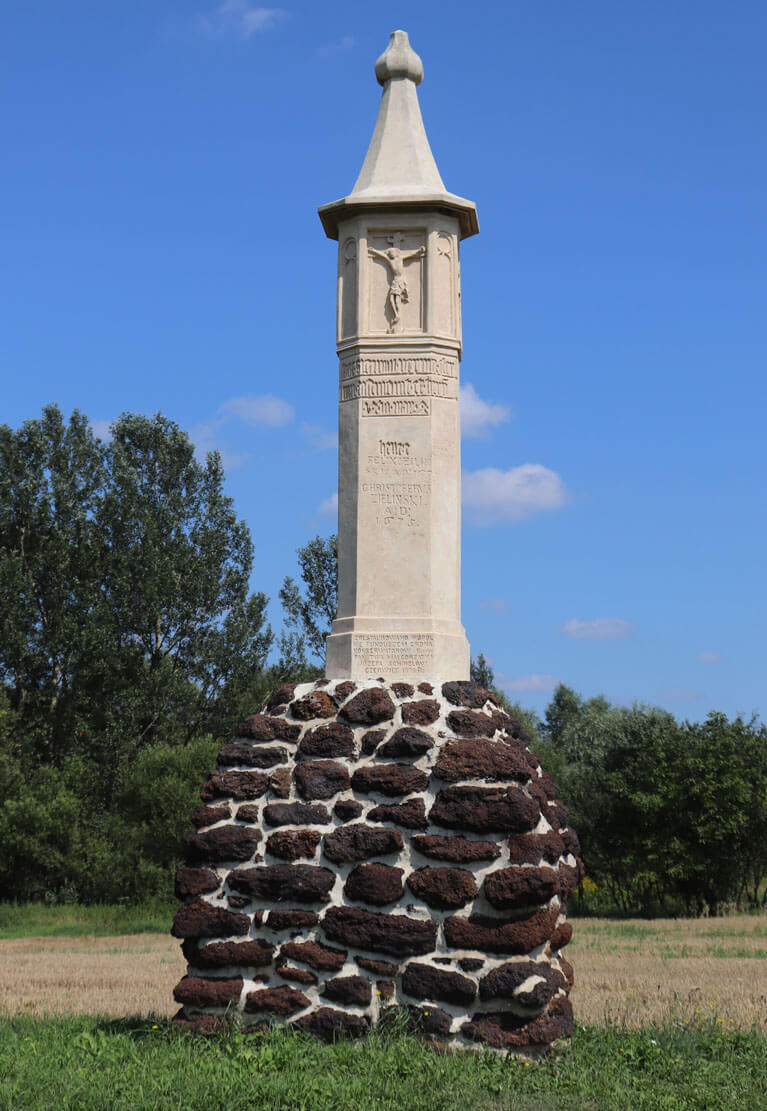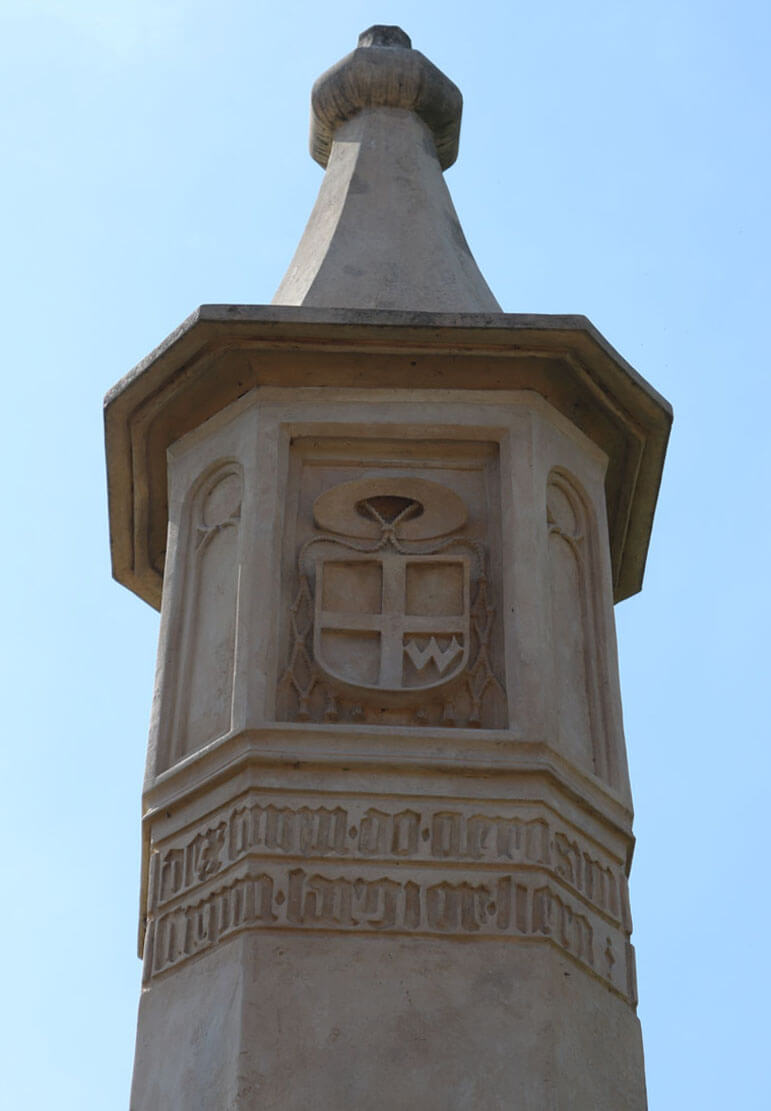History
The village of Biskupice was founded on the land belonging to the bishops of Kraków. The nearby villages of Zabawa and Zdrochec were also situated on the bishop’s lands, founded around 1241, when the bishop of Kraków, Wiesław of Kościelec, allowed his brothers to establish two settlements in the Radłów forests. This later became the cause of many border disputes, because the brothers and their descendants began to claim rights to all the forests of the bishop’s estate in Radłów. The lawsuits intensified in the early 15th century, when the “heredes de Drochcza et Zabawa et Pawłów” demanded the right to cut trees in the Radłów forests.
In 1450, Cardinal Zbigniew Oleśnicki funded a border pillar and issued an appropriate act regarding the border with the estates of the villages of Zabawa and Zdrochec, in order to end the long-term disputes. This act was signed by the subcamerarius of Sandomierz, Mikołaj Powała from Taczów and Jan Oleśnicki, the Sandomierz voivode, the cardinal’s brother. The document recorded the raising of boundary mounds and the making of cuts in trees in order to “once and for all separate the Zabawa and Zdrochec estates from the bishop’s property”. In addition, the document precisely specified the founder and described the appearance of the boundary pillar.
The Biskupice pillar clearly fulfilled its task, as border disputes ceased at the end of the Middle Ages. In the early modern period, the structure avoided destruction, despite the battle with the Swedes fought in the mid-17th century near Radłów, or numerous floods of the nearby Dunajec. The column was also not subject to any major transformations, only in the 17th century were the names and surnames of three people carved on it: Feliks Zieliński, Krzysztof Zieliński and Jan Kluziński. The first recorded renovation works of the monument were carried out in the 19th century.
Architecture
The border pillar was placed on the medieval road leading from Radłowo to Opatów. It was made of Pińczów limestone, in the shape of a quadrangular prism with chamfered corners. It was covered with a stone roof with a ball, resembling a cardinal’s hat, under which four bas-reliefs were placed on the wider walls in rectangular surfaces. A crucifix was placed on the front wall, and on the two side walls a figure of a woman in a halo, probably the Virgin Mary and St. John. A cartouche with the coat of arms of Zbigniew Oleśnicki was placed on the back wall. Under the cross, an inscription was carved in Gothic minuscule: “This sign of the clergy and lords’ estates. 1450, May 4”. Below, at a distance, the name Hencze was carved. On the reverse side of the pillar, there was an inscription reading: “I give to the clergy on the right, and to the lords on the left”.
Current state
The border pillar in Biskupice Radłowskie, next to the road column from Konin, is the oldest and best preserved monument of its kind in Poland. The area around it is publicly available. It is located on the eastern side of road no. 964, where it turns behind the village of Biskupice to the hamlet of Zabawa. Although it is not located on any raised terrain, it is perfectly visible from a distance and is not obscured by any buildings. In recent years it has been restored.
bibliography:
Grabski W., Słup graniczny z XV wieku w Biskupicach Radłowskich, „Kwartalnik Historii Kultury Materialnej”, 4/1956.
Katalog zabytków sztuki w Polsce, tom I, zeszyt 1, województwo krakowskie, powiat bialski, red. J.Szablowski, Warszawa 1953.
Krasnowolski B., Leksykon zabytków architektury Małopolski, Warszawa 2013.


